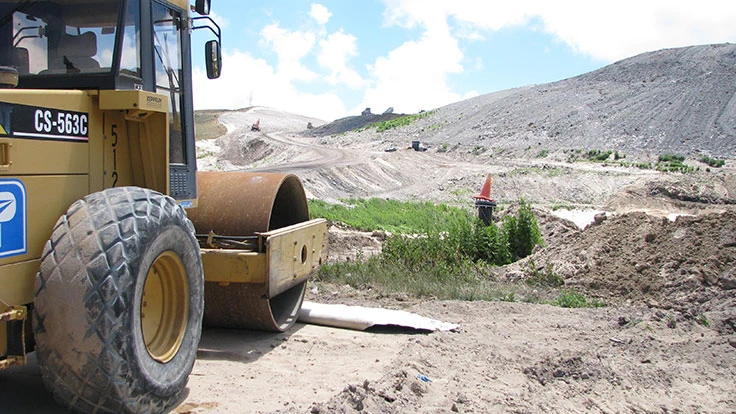
An analysis from the Los Angeles office of research firm IBISWorld Inc. concludes that waste disposal costs are rising in the United States in part because of the sustainability and recycling goals of commercial and municipal customers.
According to IBISWorld, from 2013 to 2016, the prices of landfill and solid waste collection services have been increasing at estimated average rates of 2.9 percent and 1.7 percent per year, respectively. From 2016 to 2019, IBISWorld says it expects the prices of solid waste collection and disposal services to increase “at a moderate annualized rate of 2.0 percent.”
IBISWorld Procurement Research Analyst Deonta Smith says the costs to provide recycling services have been rising similarly in the previous four years. “Altogether, recycling service costs have increased at an annualized rate of about 1.9 percent during the past three years,” says Smith. The group predicts that same average rate rise will stay in place through 2019.
Regarding the recent history of municipal and commercial recycling, Smith comments, “Waste haulers have been able to generate more revenue from the emerging recycled material market created from advances and initiatives to ‘reduce, reuse, recycle.’ However, the cost of going green has recently jumped for many waste collection firms, and the added expense has often been passed down the line to [customers].”
The analysis anticipates the need for additional recycling plant modernization, continued landfill gas-to-energy investments and the likelihood that the nation’s 1,900 municipal solid waste (MSW) landfills will be able to continue to offer affordable service to much of the U.S.
“Renewed private investment in green practices is expected to generate new revenue streams for the recycling service market,” writes Smith. “For example, a number of companies and investors have collaborated to create the Closed Loop Fund, designed to encourage recycling and help modernize existing recycling facilities,” he adds.
Smith continues, “Involved companies have also pledged to incorporate more recyclable material into their production to appease stakeholders. Such renewed interest will provide operators with the funds necessary to invest in modernizing their facilities and lower operating costs.”
Of the landfill gas sector, Smith writes, “A number of waste haulers, including Waste Management Inc. and Republic Services Inc., have installed waste-to-energy conversion equipment at their landfills. Because the energy produced can be sold to downstream energy suppliers, this strategy provides waste haulers with another source of revenue. As this practice is expanded to more landfills, suppliers’ profit margins will rise, allowing them to keep future landfill service price growth in check and subsequently limiting solid waste collection service price growth as well.”
The IBISWorld analysis judges the state of the nation’s 1,900 MSW to be sound. Writes Smith, “One aspect of zero waste plans has been to reduce the number of landfills. Today, there are only about 1,900 landfills; however, these disposal sites are much larger and more efficient than old landfills. So, even though the reduction in landfills was intended to inflate landfill service prices and incentivize recycling, higher average operational efficiency has actually allowed suppliers to continue offering reasonable service prices.”
Latest from Recycling Today
- BMW Group, Encory launch 'direct recycling’ of batteries
- Loom Carbon, RTI International partner to scale textile recycling technology
- Goodwill Industries of West Michigan, American Glass Mosaics partner to divert glass from landfill
- CARI forms federal advocacy partnership
- Monthly packaging papers shipments down in November
- STEEL Act aims to enhance trade enforcement to prevent dumping of steel in the US
- San Francisco schools introduce compostable lunch trays
- Aduro graduates from Shell GameChanger program





